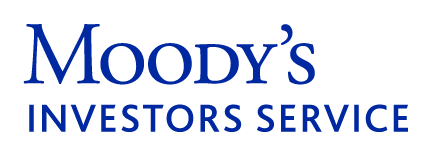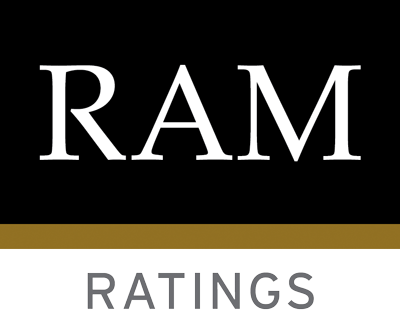The Asset Triple A Rating Agency of the Year Awards 2016
SOVEREIGN RATING AGENCY OF THE YEAR

PUBLIC FINANCE RATING AGENCY OF THE YEAR

FINANCIAL INSTITUTION RATING AGENCY OF THE YEAR

CORPORATE RATING AGENCY OF THE YEAR

INVESTMENT GRADE RATING AGENCY OF THE YEAR

HIGH YIELD RATING AGENCY OF THE YEAR

STRUCTURED FINANCE RATING AGENCY OF THE YEAR

PROJECT FINANCE RATING AGENCY OF THE YEAR

COUNTRY AWARDS
RATING AGENCY OF THE YEAR – China

STRUCTURED FINANCE RATING AGENCY OF THE YEAR – China

RATING AGENCY OF THE YEAR – India

RATING AGENCY OF THE YEAR – Malaysia

PROJECT FINANCE RATING AGENCY OF THE YEAR – Malaysia
.png)
Nearly a decade since the global financial crisis, credit rating agencies have fine-tuned their approach and taken steps to improve the transparency of their ratings process. Some have been more successful than others. Both issuers and investors have also become more discriminating. Issuers switch ratings providers sometimes irrespective of the ratings outcome. Some suggest greater engagement of the ratings provider as one reason for the switch. A few prefer to work with two out of three international rating agencies. Meanwhile, domestic rating agencies have refined their methodology earning praise from investors.
Now in its second year, The Asset Triple A Rating Agency of the Year recognition has, for the first time, incorporated the views of investors that use rating agencies’ research in their investment decisions. The inclusion of their views complements The Asset’s ongoing conversation with the issuers and rating advisors of investment banks on factors affecting their choice of rating agencies. Close to 100 fixed income investors based in the region participated in this year’s survey on credit rating agencies.
The views of the buyside offered insights on which credit rating agency is ahead of the curve. Their opinions vary. According to some investors, some rating agencies have become more “trigger happy” in the past year in downgrades/credit watch “to play on the safe side”. This perhaps is in reaction to criticisms of the agencies in 2008. The larger firms, who have their fixed income research set up, say they use the rating agencies sparingly to complement their own in-house research. One investor points out that it uses all three international rating agencies and bases its decision on the research they provide.
Pressed to provide a more nuanced view of the rating agencies, a number of descriptions recur. The credit research process was raised as the basis for choosing one rating agency. “They have much better research. They recognize the problem ahead of time and their warning signs are much better,” says one investor based in India. One investor in Singapore says the preferred rating agency provides “a more detailed analysis”. Another investor in Hong Kong describes the rating agency he likes as “more pro-active”. An international investor praises one rating agency for “its better approach and fair representation”.
In this regard, Moody’s Investors Service and Fitch Ratings have manifested their commitment to enhance their role in providing rating advisory amid the continuing global market volatility. They continue to play on their strength in different rating space with Moody’s securing the honours as the rating agency of the year for sovereign, investment grade, high yield and structured finance, while Fitch won the best rating agency accolades for corporates, public finance, financial institutions and project finance.
In 2016 Moody’s rated the bond issuances, both conventional and sukuk, of the most frequent sovereign issuers in the region, including Indonesia, the Philippines, and Malaysia, as well as the other sovereigns that accessed the market during the year such as Mongolia, Pakistan and Sri Lanka.
Moody’s made two rating actions on Mongolia in 2016 as it downgraded the sovereign rating twice – first in August from B2 to B3 and later in November from B3 to Caa1 with stable outlook.
Another strength of Moody’s is in the structured finance practice. In 2016, it rated the auto loan asset-backed securities (ABS) transactions by different auto finance companies operating in China such as Volkswagen, BMW, Ford, Mercedes Benz, Toyota Motor, Dongfeng Nissan and Dongfeng Peugeot Citroen. In terms of performance, it notes the credit quality of assets backing auto loan ABS deals will be good and delinquencies will remain low in 2017
Looking at other markets, Moody’s says the performance of the securitization markets in India, Korea and Singapore will be stable in 2017 with good credit quality across most asset classes.
Moody’s is also a force to reckon with in the investment grade space. In 2016, 17 G3 investment grade bond transactions carried Moody’s-only rating from issuers in China, Hong Kong, Korea, the Philippines and Singapore. It likewise assigned first time investment grade ratings to debut issuers during the year, including State Power Investment Corporation (A2), Hangzhou Hikvision Digital Technology Company (A3), ONGC Videsh Vankorneft (Baa2), Soilbuild Business Space REIT (Baa3), JD.com (Baa3), China National Chemical Corporation (Baa2) and UPL Corporation (Baa3).
On the other side of the credit spectrum, Moody’s rated a number of first time high yield issuers in 2016, including China Grand Automotive Services Company (CGA), which it assigned a B1 rating in November, reflecting its strong position in China’s auto dealership market. It assigned a B2 rating to Tien Phong Bank Commercial Joint Stock of Vietnam in October based on its expectation of a moderate probability of support from the Vietnamese government. In September, Moody’s assigned a first time B2 rating to Xinjiang Guanghui Industry Investment (Group) Company, the largest shareholder in CGA.
Fitch Ratings maintains its rating momentum in the corporate sector as manifested by its extensive Asia-Pacific coverage. Over 270 corporates carry Fitch ratings and 62% of J.P. Morgan Asia Credit Index is covered by Fitch.
This is also exemplified by a number of first time issuers carrying Fitch-only rating when they tapped the offshore bond market such as Chengdu Xingcheng Investment Group Company (BBB+), Yancheng Oriental Investment and Development Group (BB+), Suqian Economic Development Corporation (BB), Wuhan Metro Group Company (A) and Xi’an Municipal Infrastructure Construction Investment (BBB).
One of Fitch’s strengths in this area is its coverage of the local government financing vehicles (LGFVs) in China, whose universe expanded in 2016 with its increasing appetite for foreign currency funding. Fitch also has more analysts based in China – Beijing and Shanghai – and its new Shanghai office underpins its China business drive.
Fitch likewise boasts of an extensive coverage of the financial institutions space across Asia-Pacific as it covers 190 banks, 108 non-bank financial institutions and 79 insurance companies. It has a robust methodology, having established a framework for each sector. It provides extra transparency through ratings navigator (banks and insurance companies) and issues supplementary sector factor credit reports describing the key credit factors used to analyze the insurance companies.
In terms of deals, among the landmark transactions that carried a Fitch rating include Asia’s first TLAC- (total loss absorbing capacity) eligible notes from MUFG of Japan and the debut issuances of China Everbright Bank (Hong Kong) and ABC Financial Leasing that both carried Fitch-only rating. Apart from TLAC bonds, Fitch also has rating expertise in new asset classes such as Masala bonds and green bonds.
Fitch remains a leader in rating transactions in the international public finance (IPF) sector, generating positive feedback for its in-depth and more detailed research approach. Its LGFV coverage helps underpin such leadership and rated a number of IPF-related bond issuances in 2016, including the first offering by Wuhan Metro Group in November amounting to US$290 million and the debut deal by Xi’an Municipal Infrastructure Construction Investment for US$500 million.
Fitch also has an extensive coverage of the project finance sector, rating bond transactions as well as companies engaged in energy, power, telecom, railway, mass transit and airport business.




.jpg)
.jpg)


